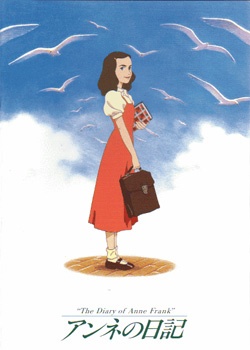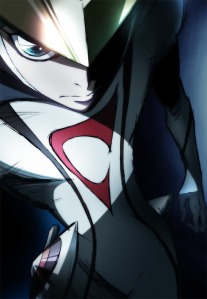
A person falling in love with an attractive werewolf or vampire is a familiar theme in shapeshifter stories. What’s less familiar is for these stories to extend beyond the relationship, and detail the hardships of raising “half breed” children in a prejudiced society. This is what sets Wolf Children apart from the rest of the pack.
On the surface, such a premise may seem difficult to buy into, but Wolf Children works beautifully thanks to the writer/director, Mamoru Hosoda, opting to tell this story as a coming-of-age drama. He balances the tension with delightful humor, embodied by characters who endure hardships we can relate with and take seriously.
Hana is the quintessential selfless mother who’s always acting for the benefit of her lover and children. When she has time to herself, she spends it quietly and alone. It’s heartwarming how helping others seems to drive her, but it’s also kinda sad how little she does for herself. While watching this movie, there were times I wished I could take Hana out for pizza or karaoke. My own sensitivities may be more of the issue here. Perhaps providing for her family is enough?
Hana’s children, Yuki and Ame, are opposites of each other. Yuki, the girl, is rambunctious and loud; Ame, the boy, is introverted and quiet. Over the course of their upbringing, Yuki is encouraged to be more feminine, and Ame is encouraged to be more confident. Since Yuki is the funner character, more screen time is spent on her, and, consequently, Ame isn’t as thoroughly developed. When Ame makes a personal choice later in the film, it feels a little abrupt.
Visually, Wolf Children is super clean. Characters are drawn with thin outlines, and the animation is generously in-betweened. The designs fall closer to the realistic side of the 2D animation spectrum. Background characters are 3D cel-shaded, and generally mesh well with the subtle details of the background art. The score is comprised mostly of gentle melodies played with piano and strings.
Wolf Children aspires to the greatness of a classic Studio Ghibli film. There are some aspects that could be nitpicked, but, frankly, the negatives I mention in this review should probably just be disregarded; they aren’t that important. Regardless of any supposed drawbacks, the general experience is undoubtedly powerful.





 On June 12th, 1929, about ten-years before the start of World War II, Annelies Marie Frank was born to parents Otto and Edith Frank in Frankfurt, Germany. Rendered stateless by the Nazis in 1941, and without any means to flee the country, Anne and her family were forced into confinement for two-years in a cramped attic to avoid persecution. While staying there, Anne documented her life in a now famous diary, which has since been adapted into movies, plays, and even an anime.
On June 12th, 1929, about ten-years before the start of World War II, Annelies Marie Frank was born to parents Otto and Edith Frank in Frankfurt, Germany. Rendered stateless by the Nazis in 1941, and without any means to flee the country, Anne and her family were forced into confinement for two-years in a cramped attic to avoid persecution. While staying there, Anne documented her life in a now famous diary, which has since been adapted into movies, plays, and even an anime.